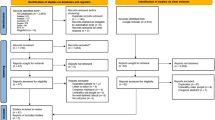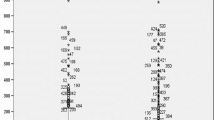Abstract
Objectives
This review clarifies current information regarding the prevalence of and risk factors associated with dysphagia (swallowing disorders) in the community dwelling elderly (CDE). A better understanding of prevalence and characteristics of dysphagia in the CDE will help to determine the scope of this problem. Understanding the scope of dysphagia is a critical first step towards early identification, management, and prevention of dysphagia related morbidities in the CDE.
Methods
Studies identified from multiple electronic databases (MEDLINE (Pubmed), PsychInfo, Google Scholar, EBSCO, PROQUEST, Web of Science and WorldCat dissertations and theses) evaluating prevalence and risk factors for dysphagia in the CDE were reviewed. Data from all eligible studies were abstracted by the first author and independently reviewed by two raters, using the Newcastle-Ottawa scale (NOS).
Results
15 studies (n = 9947 participants) were eligible for inclusion. Studies included were all observational: 14 cross-sectional and 1 prospective cohort. Significant heterogeneity was observed in methodology among studies of dysphagia in the CDE. The average NOS study quality rating was 4.54 points (SD: 0.9), with a mode of 4 points (range 3-6). Only 6 of the 15 studies were identified as high quality research studies, with a mean of 5.33 points (SD: 0.47). Among reviewed studies, the prevalence of swallowing difficulty in the CDE ranged from 5% to 72%. However, the average prevalence of dysphagia estimated from the 6 high quality studies was 15%. Reported risk factors associated with dysphagia include advancing age; history of clinical disease; and physical frailty, including reduced ability to carry out activities of daily living.
Conclusion
Research on dysphagia in CDE is modest and consists mostly of observational studies with diverse methodology. However, prevalence rate of 15% from the high quality research suggests a significant public health impact of this impairment. Identification of specific risk factors that cause dysphagia in the CDE is premature, given the rigor of published studies. Future research efforts should focus on developing a valid definition and assessment of dysphagia in this population before clarifying causative risk factors.





Similar content being viewed by others
References
Centers for Disease Control and Prevention. Older Person’s Health. http://www.cdc.gov/nchs/fastats/older-american-health.htm. Accessed 15th Jan 2015.
US Department of Health and Human Services, 1999: 1-6. Agency for Healthcare Research and Quality. Diagnosis and treatment of swallowing disorders (dysphagia) in acute-care stroke patients. Evidence report/technology assessment (Summary). Archived EPC Evidence Reports. Accessed 15th June 2015.
Barczi SR, Sullivan PA, Robbins J. How should dysphagia care of older adults differ? Establishing optimal practice patterns. Semin Speech Lang. 2000;21(4):347–61.
Steele CM, Greenwood C, Ens I, Robertson C, Seidman-Carlson R. Mealtime difficulties in a home for the aged: not just dysphagia. Dysphagia. 1997;12(1):43–50; discussion 1.
Lee A, Sitoh YY, Lieu PK, Phua SY, Chin JJ. Swallowing impairment and feeding dependency in the hospitalised elderly. Ann Acad Med Singapore. 1999;28(3):371–6.
Leder SB, Suiter DM. An epidemiologic study on aging and dysphagia in the acute care hospitalized population: 2000-2007. Gerontology. 2009;55(6):714–8.
Byles J. The epidemiology of communication and swallowing disorders. International Journal of Speech-Language Pathology. 2005;7(1):1–7.
Prasse JE, Kikano GE. An overview of dysphagia in the elderly. Advanced studies in medicine. 2004;4(10):527–33.
Bloem BR, Lagaay AM, van Beek W, Haan J, Roos RA, Wintzen AR. Prevalence of subjective dysphagia in community residents aged over 87. BMJ. 1990;300(6726):721–2.
Chen MY, Lin LC. Nonimaging clinical assessment of impaired swallowing in community-dwelling older adults in Taiwan. J Nurs Res. 2012;20(4):272–80.
Gonzalez-Fernandez M, Humbert I, Winegrad H, Cappola AR, Fried LP. Dysphagia in old-old women: prevalence as determined according to self-report and the 3-ounce water swallowing test. J Am Geriatr Soc. 2014;62(4):716–20.
Chen PH, Golub JS, Hapner ER, Johns MM, 3rd. Prevalence of perceived dysphagia and quality-of-life impairment in a geriatric population. Dysphagia. 2009;24(1):1–6.
Holland G, Jayasekeran V, Pendleton N, Horan M, Jones M, Hamdy S. Prevalence and symptom profiling of oropharyngeal dysphagia in a community dwelling of an elderly population: a self-reporting questionnaire survey. Dis Esophagus. 2011;24(7):476–80.
Kawashima K, Motohashi Y, Fujishima I. Prevalence of dysphagia among community-dwelling elderly individuals as estimated using a questionnaire for dysphagia screening. Dysphagia. 2004;19(4):266–71.
Lindgren S, Janzon L. Prevalence of swallowing complaints and clinical findings among 50-79-year-old men and women in an urban population. Dysphagia. 1991;6(4):187–92.
Mann T, Heuberger R, Wong H. The association between chewing and swallowing difficulties and nutritional status in older adults. Aust Dent J. 2013;58(2):200–6.
Okamoto N, Tomioka K, Saeki K, Iwamoto J, Morikawa M, Harano A, et al. Relationship between swallowing problems and tooth loss in communitydwelling independent elderly adults: the Fujiwara-kyo study. J Am Geriatr Soc. 2012;60(5):849–53.
Roy N, Stemple J, Merrill RM, Thomas L. Dysphagia in the elderly: preliminary evidence of prevalence, risk factors, and socioemotional effects. Ann Otol Rhinol Laryngol. 2007;116(11):858–65.
Takeuchi K, Aida J, Ito K, Furuta M, Yamashita Y, Osaka K. Nutritional status and dysphagia risk among community-dwelling frail older adults. J Nutr Health Aging. 2014;18(4):352–7.
Yang EJ, Kim MH, Lim JY, Paik NJ. Oropharyngeal Dysphagia in a communitybased elderly cohort: the korean longitudinal study on health and aging. J Korean Med Sci. 2013;28(10):1534–9.
Serra-Prat M, Palomera M, Gomez C, Sar-Shalom D, Saiz A, Montoya JG, et al. Oropharyngeal dysphagia as a risk factor for malnutrition and lower respiratory tract infection in independently living older persons: a population-based prospective study. Age Ageing. 2012;41(3):376–81.
Singer C, Keintz, C., Danesh, A., Engstrom, G., Ouslander, J., Tappen, R. Perceived swallowing disorders in healthy aging individuals: impact on quality of life American Speech, Language, and Hearing Association Annual Convention, 2014. Orlando, FL.
Butler SG, Stuart A, Leng X, Wilhelm E, Rees C, Williamson J, et al. The relationship of aspiration status with tongue and handgrip strength in healthy older adults. J Gerontol A Biol Sci Med Sci. 2011;66(4):452–8.
Miura H, Kariyasu M, Yamasaki K, Arai Y. Evaluation of chewing and swallowing disorders among frail community-dwelling elderly individuals. J Oral Rehabil. 2007;34(6):422–7.
Altman KW, Yu GP, Schaefer SD. Consequence of dysphagia in the hospitalized patient: impact on prognosis and hospital resources. Arch Otolaryngol Head Neck Surg. 2010;136(8):784–9.
Liberati A, Altman DG, Tetzlaff J, Mulrow C, Gotzsche PC, Ioannidis JPA, Clarke M, Devereaux PJ, Kleijnen J, Moer D. The PRISMA statement for reporting systematic reviews and meta- analyses of studies that evaluate health care intervetions: explanation and elaboration. PLoS Medicine. 2009;6(7).
Fritz CO, Morris PE, Richler JJ. Effect size estimates: current use, calculations, and interpretation. Journal of experimental psychology. 2012;14(1):2–18.
Wells GA SC, O’Connell D, Peterson J, Welch V, Losos M, Tugwell P. The Newcastle-Ottowa Scale (NOS) for assessing the quality of nonrandomised studies in meta-analyses 2014.
Herzog R, Alvarez-Pasquin MJ, Diaz C, Del Barrio JL, Estrada JM, Gil A. Are healthcare workers’ intentions to vaccinate related to their knowledge, beliefs and attitudes? A systematic review. BMC Public Health. 2013;13:154.
Landis JR, Koch GG. The measurement of observer agreement for categorical data. Biometrics. 1977;33(1):159–74.
Rosenbek JC, Robbins JA, Roecker EB, Coyle JL, Wood JL. A penetrationaspiration scale. Dysphagia. 1996;11(2):93–8.
Perry L. Screening swallowing function of patients with acute stroke. Part one: Identification, implementation and initial evaluation of a screening tool for use by nurses. J Clin Nurs. 2001;10(4):463–73.
Nathadwarawala KM, McGroary A, Wiles CM. Swallowing in neurological outpatients: use of a timed test. Dysphagia. 1994;9(2):120–9.
Chen AY, Frankowski R, Bishop-Leone J, Hebert T, Leyk S, Lewin J, et al.. The development and validation of a dysphagia-specific quality-of-life questionnaire for patients with head and neck cancer: the M. D. Anderson dysphagia inventory. Arch Otolaryngol Head Neck Surg. 2001;127(7):870–6.
McHorney CA, Robbins J, Lomax K, Rosenbek JC, Chignell K, Kramer AE, et al. The SWAL-QOL and SWAL-CARE outcomes tool for oropharyngeal dysphagia in
Author information
Authors and Affiliations
Corresponding author
Appendices
Newcastle-Ottawa Scale adapted for cross-sectional studies

Newcastle-Ottawa quality assessment scale cohort studies

Rights and permissions
About this article
Cite this article
Madhavan, A., Lagorio, L.A., Crary, M.A. et al. Prevalence of and risk factors for dysphagia in the community dwelling elderly: A systematic review. J Nutr Health Aging 20, 806–815 (2016). https://doi.org/10.1007/s12603-016-0712-3
Received:
Accepted:
Published:
Issue Date:
DOI: https://doi.org/10.1007/s12603-016-0712-3




